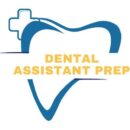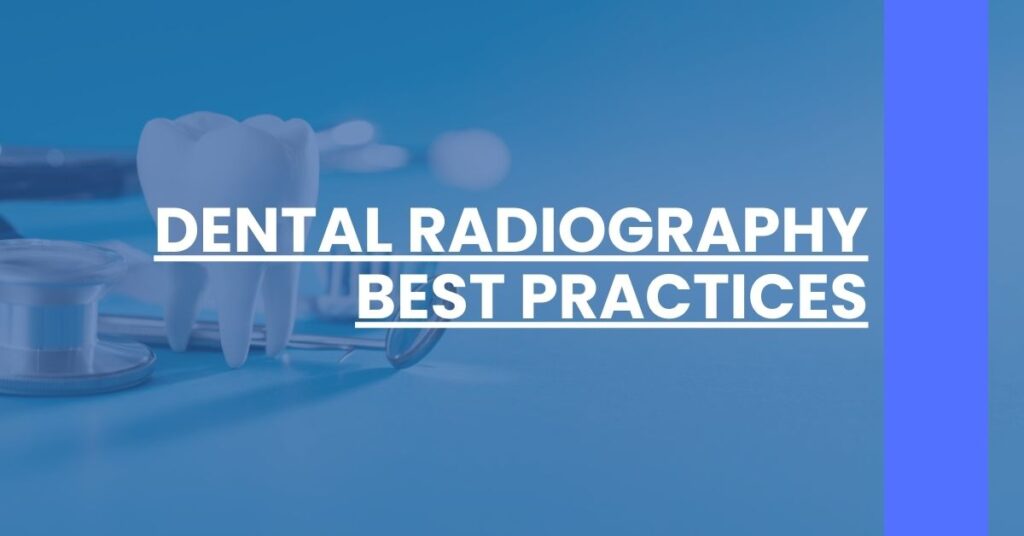Embrace Dental Radiography Best Practices to elevate patient care and diagnostic precision in dentistry.
- Updated Guidelines: Keep abreast with the latest protocols for safe dental imaging.
- Patient Safety: Prioritize radiation protection and minimizing exposure.
- Technological Advances: Stay at the forefront with emerging digital radiography tools.
Implementing Dental Radiography Best Practices is crucial for modern dental health services.
Understanding Dental Radiography
Dental radiography is an indispensable diagnostic tool that allows dental professionals to view the structures of the mouth that are not visible to the naked eye. This imaging technology is crucial for identifying and treating oral health issues such as decay, bone loss, and abnormalities in the root and jaw structures.
Types of Dental Radiographs
- Intraoral X-rays: These are the most common type of dental X-rays, where the film is placed inside the mouth. They provide a high level of detail and are used to check for cavities, monitor the health of the tooth root and surrounding bone, or track the development of teeth.
- Panoramic X-rays: The film is outside the mouth, providing a broad view of the entire dental arch, jaw, sinuses, and temporomandibular joints.
- Cephalometric projections: These X-rays capture the side of the head and are used primarily in orthodontics.
- Cone Beam Computed Tomography (CBCT): Offers three-dimensional imaging. CBCT is useful for complex cases involving surgical planning, implant placement, and evaluation of dental structures.
- Digital Radiography: Uses electronic sensors instead of X-ray film. This technology reduces radiation exposure and allows immediate image preview and manipulation.
Radiographs allow the detection of problems at an early stage, leading to more effective and less invasive treatments. By seeing what is invisible to the naked eye, dentists can diagnose conditions that might otherwise go unnoticed.
Significance in Diagnosis and Treatment
Radiographic images are integral components for:
- Diagnosing dental caries, periodontal disease, and infections
- Evaluating the status of developing teeth
- Assessing trauma to the oral cavity
- Planning treatment for dental implants, orthodontics, and extractions
- Monitoring progress during and after dental treatment
By understanding the various types of dental radiographs, dental professionals can select the most appropriate imaging technique to address specific dental issues.
Indications for Dental Radiography
The need for dental radiography arises from various clinical scenarios. The decision to use radiographs in a treatment plan should always be made with the patient’s welfare and necessity as a priority.
When to Use Dental X-rays
- Routine Check-ups: To monitor oral health and check for changes since the last set of X-rays
- New Patients: To assess the current oral health status and create a baseline
- Before Procedures: To aid in planning for treatments such as root canals, implants, and extractions
- Post-treatment: To determine the success of treatments and regular monitoring
Scenarios Requiring Radiographs
- Identification of Cavities: X-rays can reveal cavities between teeth or beneath existing fillings.
- Root Canal Issues: They help in assessing the root canal anatomy and infections at the tip of the root.
- Periodontal Diseases: Bone loss and the status of the supporting structures around teeth can be visualized.
- Impacted Teeth: Especially important for wisdom teeth and orthodontic evaluations.
- Trauma Assessment: To check for possible fractures or damage after an injury.
Knowing when and why to employ radiographs is foundational to adhere to best practices in dental radiography.
Patient Safety and Radiation Protection
Radiation exposure from dental X-rays is typically low, but adhering to safety principles is paramount to ensure patient wellbeing.
The ALARA Principle
As Low As Reasonably Achievable (ALARA) is the guiding principle for all radiographic procedures:
- Limit exposure time: Keep exposures as short as possible.
- Increase distance from the source: Stand away from the X-ray beam.
- Use shielding: Employ lead aprons and thyroid collars to protect patients.
Protective Measures
- Proper Equipment: Use of high-speed film or digital sensors reduces exposure time.
- Regular Maintenance: Ensure radiography equipment is routinely checked and maintained.
- Training: Adequate training for operators to perform efficient and safe X-rays.
- Patient Communication: Inform patients about the procedure and the safeguards in place.
Minimizing radiation exposure while delivering quality care is a critical balance achieved through adherence to protective measures.
Selection Criteria for Dental Radiographs
Choosing the right type and frequency of dental radiographs is a matter of professional judgment and patient-specific factors.
Factors Influencing Radiographic Choices
- Dental History: Past oral health issues and treatments inform the need for radiographs.
- Age and Growth: Children and adolescents may require more frequent imaging due to rapid changes in dental structures.
- Symptoms: Presence of oral pain, lesions, or swelling can necessitate targeted X-rays.
- Risk for Disease: Patients at a higher risk for dental caries or periodontal disease might benefit from more regular imaging.
Through individualized assessment, dental professionals can ensure patients receive the most appropriate and minimal radiography necessary for their conditions.
Operating Dental Radiography Equipment
Proper operation of dental radiography equipment is critical to achieving high-quality images while ensuring patient and operator safety.
Achieving Optimal Image Quality
- Correct Positioning: Ensure the X-ray beam is correctly aligned with the film or sensor.
- Appropriate Settings: Adjust exposure settings based on the area of interest and patient size.
- Effective Use of Technology: Utilize digital radiography enhancements, such as contrast adjustments, to improve diagnostic capabilities.
Training and Competency
- Comprehensive Training: Operators should be well-versed in using the specific radiography system in use.
- Certification: In many locations, dental professionals may require certification to take dental X-rays legally.
The adoption of best practices in operating dental radiography equipment directly impacts image quality, diagnostic accuracy, and adherence to safety protocols. With these steps, dental professionals can effectively cater to patient needs with precision and care.
Image Quality and Diagnostic Accuracy
Leveraging the best practices in dental radiography is not only about keeping the radiation dose as low as possible but also about obtaining the highest quality images to enable accurate diagnoses.
Enhancing Radiographic Image Quality
To achieve the best possible image quality, dental professionals must consider several factors:
- Correct Film/Sensor Placement: Ensuring the film or digital sensor is correctly situated in the patient’s mouth to capture the entire area of interest.
- Optimal Exposure Settings: Tailoring the exposure settings to the patient’s size and the specific area being imaged.
- Stable Positioning: Having the patient remain still during the exposure to prevent blurring of the image.
- Regular Equipment Calibration: Periodically checking and adjusting the radiography equipment to maintain optimal performance.
Factors Affecting Diagnostic Accuracy
Several elements can impact the diagnostic accuracy of dental radiographs:
- Operator Skill: The proficiency of the dental professional in taking an X-ray can greatly affect image quality.
- Equipment Quality: The better the condition and technology of the X-ray equipment, the clearer the image will be.
- Viewing Conditions: Having the right lighting and display equipment allows for a more thorough examination of the X-ray.
- Interpretation Experience: The level of experience of the dentist in interpreting radiographs influences diagnostic accuracy.
Understanding the nuances that contribute to high-quality radiographs can significantly improve the diagnostic process for various dental conditions.
Quality Assurance and Equipment Maintenance
Continuous quality assurance and maintenance of dental radiography equipment ensure that practices not only comply with regulations but also guarantee the safety and effectiveness of dental imaging.
Regular Maintenance Routines
Regular checks and servicing of radiography equipment are critical to maintaining performance:
- Daily checks: For digital systems, ensuring the software functions correctly and that sensors do not show signs of damage.
- Routine inspections: According to FDA guidelines, frequent inspections should be performed, including reviews of film processing units, X-ray units, and the image receptor devices.
- Schedule Professional Servicing: Manufacturers or certified professionals should perform in-depth maintenance regularly.
Ensuring Quality of Radiographs
Quality assurance (QA) programs are vital to maintaining the standard of radiographic imaging:
- QA Protocols: Establishing protocols for inspecting the diagnostic quality of radiographs.
- Training: Providing continual education on QA practices for all staff involved in radiography.
- Record-Keeping: Maintaining detailed logs of maintenance, tests, and quality checks.
By focusing on the upkeep of equipment and the implementation of stringent QA protocols, dental clinics can provide superior care through reliable and effective imaging.
Legal and Ethical Considerations
Navigating the labyrinth of legal and ethical considerations in dental radiography is essential for the protection of both patients and practitioners.
Lawful Compliance
Dental practices must adhere to regional and national regulations guiding the use of radiography:
- Documentation: Keeping accurate and comprehensive records of all radiographic images taken, including dates, reasons for taking the X-ray, and the outcomes.
- Patient Consent: Gaining informed consent from patients before performing any radiography procedures.
Ethical Imaging Practices
Adopting ethical practices when it comes to dental radiography involves:
- Justification: Every radiograph should be taken with a clear clinical justification to avoid unnecessary exposure to radiation.
- Confidentiality: Securing patient data and radiographic images to protect patient privacy.
Adhering to these legal and ethical guidelines maintains trust in the dental profession and ensures that patients are receiving care in a safe and responsible manner.
Education and Training for Dental Radiography
The dynamic nature of dental radiography necessitates continuous learning and skill development for those involved in taking and interpreting dental radiographs.
Importance of Adequate Training
Proper education in dental radiography is pivotal in optimizing patient outcomes:
- Certification Programs: Practitioners may require certification that involves in-depth training on radiographic techniques and safety.
- Hands-On Experience: Gaining practical experience under supervision helps in mastering the technique and understanding the nuances of interpretation.
Commitment to Ongoing Learning
Keeping up-to-date with technological advancements ensures proficiency:
- Continuing Dental Education: Attend courses, seminars, and workshops related to dental radiography.
- Adopt New Technologies: Embrace advancements, like digital X-ray systems, as they offer significant benefits over traditional methods in terms of both image quality and reduced radiation exposure.
Highly trained dental professionals, who are committed to lifelong learning, play a critical role in implementing best practices that significantly improve the safety and effectiveness of dental radiography.
The Future of Dental Radiography
Anticipating the future developments in dental radiography is important for professionals who aim to provide the best possible care for their patients.
Emerging Technologies
Innovations in imaging technology have the potential to transform dental radiography:
- Advancements in Digital X-rays: As noted in a PMC publication, digital systems are improving, providing higher quality images while further reducing radiation exposure.
- New Imaging Modalities: Technologies like Cone Beam Computed Tomography (CBCT) and Optical Coherence Tomography (OCT) offer three-dimensional and extremely detailed views of dental structures.
Trends Influencing Radiographic Practices
The trend toward more patient-centric and safer dental care includes:
- Shift Toward Preventive Dentistry: Radiography is being increasingly used to monitor oral health and prevent the progression of dental conditions.
- Personalized Imaging Protocols: Individual patient needs and risks are shaping the frequency and type of radiographs prescribed.
Conclusion and Recommendations
In summary, implementing dental radiography best practices is a multifaceted approach enveloping patient safety, quality imaging, ethical considerations, and continuous education. It underpins the vital role that radiography plays within dental health, ensuring that patients receive the highest quality of care while minimizing their exposure to radiation.
By conforming closely to established guidelines, investing in the latest technologies, engaging in lifelong learning, and maintaining a patient-centered approach, dental professionals can significantly elevate the standard of care they offer. The future of dental radiography is promising, with technological advances poised to enhance diagnostic capabilities, and incumbent upon the field is a commitment to adapt and adopt these innovations for the betterment of patient outcomes.
Through these efforts, dental professionals will not only meet the needs of their patients today but will also set a new standard in oral health care for the future.

